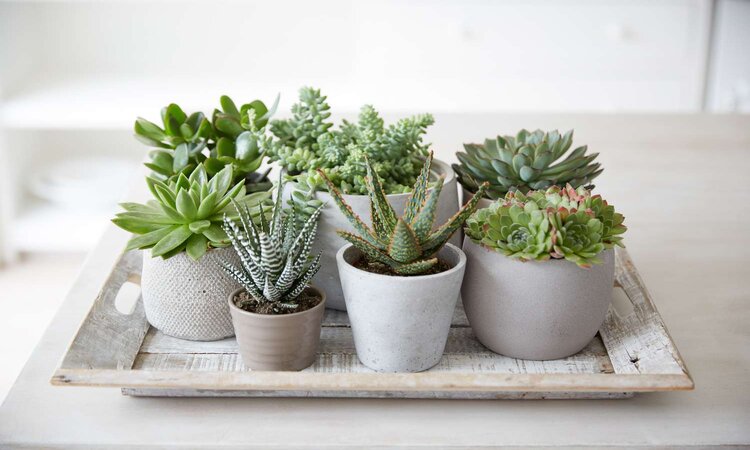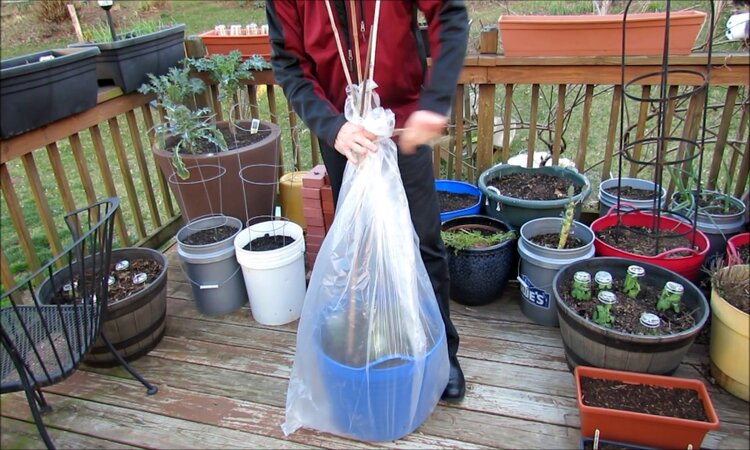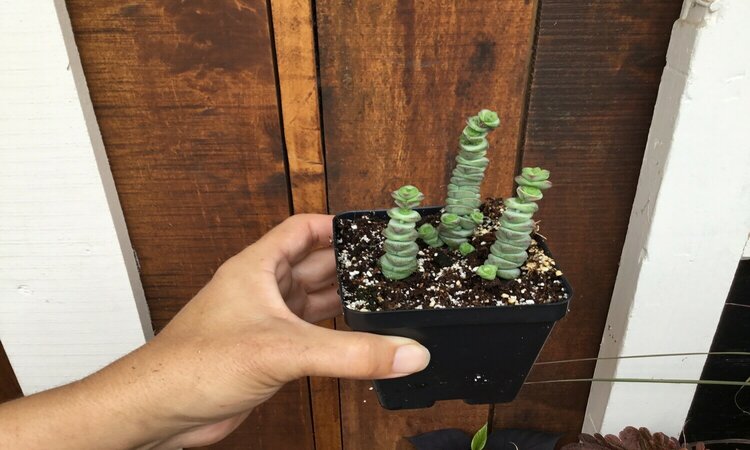Winter Succulent Care: Should You Cover Them?
Should I Cover My Succulents in Winter? This was the question my aunt asked me yesterday. She recently fell in love with some succulents and really doesn’t want to lose them at any cost.
As I have been planting succulents for years, she knew that I could tell her whether to cover succulents in winter or not. For sure, covering the succulent in winter is essential. It is beneficial, especially in regions with cold temperatures and frost.
It provides protection from frost and freezing temperatures, preventing potential damage to the plants. However, the complete fact depends on the specific succulent types and local climate conditions.
When my aunt asked me, Should I cover my succulents in winter? I realized that there are many of you who are looking for the answer to the same question. That’s why I’m here today to clear up all your confusion regarding covering up the succulent in winter.
Should I Cover My Succulents in Winter?
In general, covering your succulents in winter helps in regions with cold temperatures and frost. However, its necessity depends on the specific succulents that can survive winter and local climate conditions.
I consider the cold hardiness of my plants before making a decision about whether I should cover my succulents in winter or not. Frost protection is crucial as it can damage succulents, leading to discoloration or death. Microclimates in your garden might expose certain plants to more cold and frost, warranting protection.
Use suitable materials like frost cloths, burlap, or blankets, avoiding plastic to prevent moisture retention. Remember to cover your succulents temporarily during cold weather or frost and remove the cover when temperatures rise.
Be cautious about overwatering, as covering can create a warmer, more humid environment during their dormant period. Elevate the cover to avoid direct contact with the plants.
Overall, understanding your succulents’ cold tolerance and local climate is key to making the best decision for winter care.
Benefits of Covering the Succulents in Winter
Covering succulents in winter can provide several benefits, especially in regions with cold temperatures and frost:
Frost Protection
One of the primary reasons to cover succulents in winter is to protect them from frost. Frost can damage succulents by causing their cells to rupture, leading to discoloration or even death. The covering provides a barrier that shields the plants from freezing temperatures and reduces the risk of frost damage.
Temperature Regulation
Covering creates a microclimate around the succulents, helping to maintain a more stable and slightly warmer temperature. This can prevent sudden temperature fluctuations that might stress the succulents during winter.
Moisture Retention
By covering the succulents, you can prevent excessive moisture loss due to cold winds and low temperatures. Succulents are adapted to arid conditions, and covering them can help retain the moisture they need to survive through winter.
Reduced Watering
Succulents enter a period of dormancy during winter, and their water requirements decrease. Covering helps reduce water evaporation from the soil, allowing you to water them less frequently without risking dehydration.
Protection from Harsh Weather
Covering your succulents also shields them from other harsh winter weather elements, such as heavy rain, sleet, or snow. This protection can prevent waterlogging and other potential issues caused by excessive moisture.
Preventing Pest Infestations
Covering your succulents can act as a physical barrier, keeping pests and rodents away from the plants during the dormant season when they might be more vulnerable.
Promoting Spring Growth
By protecting your succulents from potential damage during winter, you give them a better chance to thrive when spring arrives. Healthy succulents will have a head start in their growth and flowering when warmer weather returns.
Remember that while covering your succulents offers benefits, it should be done selectively and temporarily during extreme weather conditions. It’s essential to remove the cover once the threat of frost or cold weather has passed to allow the plants to receive adequate light and air circulation.
What Type of Cover to Use for Succulents in Winter?
When you decide something positive to your question ‘Should I cover my succulents in winter?’ Keep in mind that it’s essential to use materials that provide adequate insulation and protection while allowing the plants to breathe.
Here are some suitable types of covers to consider:
Frost Cloth
Frost cloth, also known as frost blankets or plant covers, is specifically designed to protect plants from cold temperatures and frost. It provides insulation while allowing light, air, and water to pass through.
Frost cloth is available in different thicknesses, so choose one appropriate for the severity of your winter weather.
Burlap
Burlap is a natural and breathable material that can be used to cover cold hardy succulents. It offers moderate protection from cold temperatures and frost while allowing air circulation. Make sure to secure it properly to prevent it from unraveling in windy conditions.
Old Blankets or Towels
If you have old blankets or towels that you no longer use, they can be repurposed as covers for your succulents. These materials offer some insulation and protection from frost. Just ensure they are clean and dry before using them.
Straw or Hay
Straw or hay can be used as a natural cover to protect your succulents. It helps insulate the plants and retain moisture but be cautious about potential pests or mold issues associated with using organic materials.
Cardboard or Corrugated Plastic
For potted succulents, you can use cardboard or corrugated plastic sheets to create a makeshift cover. These materials provide insulation and protection against frost. Just ensure the cover does not touch the leaves directly.
Plant Tents or Mini Greenhouses
If you have larger succulents or multiple plants to protect, you can consider using plant tents or mini-greenhouses. These structures provide better insulation and protect the plants from cold, wind, and frost effectively.
What to Avoid:
- Plastic covers should be avoided as they can trap moisture and lead to fungal issues and rot.
- Heavy covers that press down on the succulents may cause damage to the plants.
Whichever type of cover you choose, make sure to secure it properly to prevent it from blowing away in windy conditions. Also, remember to remove the cover during the day if the weather becomes milder to allow the succulents to receive sufficient light and ventilation.
Do you have sweet corn plants at home? If yes, learn the benefits of 16-16-8 liquid fertilizer for corn.
Indoor vs Outdoor Succulent Winter Care
When it comes to protecting succulents in winter, the care routine can vary significantly based on whether they’re grown indoors or outdoors. Understanding the difference helps you tailor your approach and keep your plants healthy through the cold season.
Indoor Succulent Winter Care
Indoor succulents are generally easier to protect in winter, but they still need attention. Here’s what to keep in mind:
-
Light is key – Place your succulents near a bright, south-facing window. If natural light is limited, consider using a grow light to supplement.
-
Watch indoor temperatures – Most succulents do best between 60°F and 75°F. Keep them away from cold drafts and heating vents.
-
Limit watering – Because indoor air is usually drier, only water when the soil is completely dry. Overwatering is one of the most common causes of winter rot.
-
Skip the fertilizer – Since succulents go dormant in winter, there’s no need to feed them until spring.
Outdoor Succulent Winter Care
If your succulents live outdoors year-round, they’ll need more hands-on protection during cold snaps:
-
Cover during frost – Use breathable materials like frost cloths or burlap. Avoid plastic, which traps moisture.
-
Bring sensitive types inside – If you’re growing tender varieties like Echeveria or Aloe outdoors, it’s best to move them indoors once temps drop below 40°F.
-
Provide drainage – Ensure pots and garden beds drain well to prevent root rot from excess rain or snow.
-
Use mulch sparingly – For in-ground succulents, a thin layer of gravel or straw can help insulate the soil without holding too much moisture.
Whether your succulents are cozy indoors or braving the outdoor chill, the goal is the same: protect them from extreme cold while preventing rot and pests.
How to Take Care of the Covered Succulents?
Taking care of covered succulents during the winter requires some attention to ensure their well-being. Here are essential care tips for succulents under covers:
Monitor Temperature
Check the weather regularly to ensure the covered area remains within the suitable temperature range for succulents. While covers offer protection from extreme cold, they can also create a slightly warmer microclimate.
Avoid overheating the plants, as succulents still need a period of dormancy during winter.
Water Sparingly
During winter, succulents enter a dormant phase and require less water. The covers can help retain moisture, so be cautious not to overwater. Water only when the soil is dry to the touch, and adjust the frequency based on the specific succulent’s needs and the level of insulation provided by the cover.
Remove Covers During Mild Periods
If the temperature rises and the threat of frost subsides, remove the covers during the day to allow the succulents to breathe and receive adequate light. This will prevent overheating and allow the plants to continue their dormancy cycle naturally.
Ventilation
Ensure there is sufficient ventilation within the covered area to prevent excess humidity and potential fungal issues. If using a mini greenhouse or plant tent, open the vents or doors periodically to allow fresh air circulation.
Watch for Pests
Check the covered succulents regularly for signs of pests or diseases. Covers can create a sheltered environment where pests might thrive. If you notice any issues, take appropriate measures to address them promptly.
Remove Fallen Leaves and Debris
Fallen leaves or debris under the cover can create a damp and conducive environment for pests or diseases. Regularly remove any debris to keep the area clean and dry.
Inspect Cover Integrity
Check the covers for any tears or damage that may compromise their effectiveness. Repair or replace damaged covers to ensure optimal protection for the succulents.
Elevate the Cover
If using a cover directly over the succulents, elevate it slightly using stakes or other supports. This will prevent the cover from touching the leaves, as direct contact can cause damage to the plants.
Avoid Overcrowding
If covering multiple succulents in the same area, ensure they have enough space between them to receive adequate light and airflow.
Remember that winter care for succulents can vary depending on the specific species and climate conditions. Pay attention to the needs of your individual succulents and adjust your care routine accordingly.
When spring arrives and the risk of frost is gone, gradually acclimate the succulents to outdoor conditions before fully removing the covers.
Succulent Winter Care Tips
Here are some essential winter care tips for succulents:
Select Cold-Hardy Varieties
If you live in an area with cold winters, choose cold-hardy succulent varieties that can withstand low temperatures without additional protection.
Know Your Succulents
Understand the specific needs of each succulent species you have. Some succulents are more sensitive to cold and require more protection, while others can tolerate lower temperatures.
Monitor Weather Conditions
Stay informed about the weather forecast in your area. Be prepared to provide extra protection when frost or freezing temperatures are expected.
Cover When Necessary
Use appropriate materials like frost cloth, burlap, or old blankets to cover vulnerable succulents during extreme cold or frost. Ensure the cover does not touch the plants directly.
Water Sparingly
Succulents are in a dormant phase during winter, so they require less water. Water sparingly and only when the soil is dry to prevent overwatering, which can lead to root rot.
Provide Adequate Light
Place covered succulents in areas with sufficient natural light. If indoors, keep them near a south-facing window to receive the most sunlight.
Avoid Fertilizing
Refrain from fertilizing your succulents during the winter months. They do not actively grow during this period, so they don’t require additional nutrients.
Maintain Good Air Circulation
Ensure there is proper ventilation around your succulents, especially if you’re using covers. Good air circulation helps prevent fungal issues and encourages healthy growth.
Check for Pests
Periodically inspect your succulents for signs of pests like aphids or mealybugs. Covered areas can provide hiding spots for pests, so early detection is crucial.
Elevate Containers
If your succulents are in pots, place them on pot feet or elevate them slightly to improve drainage and prevent waterlogging.
Prune Wisely
If you notice any dead or damaged parts on your succulents, carefully prune them to promote new growth and maintain the overall health of the plant.
Avoid Repotting: Refrain from repotting your succulents during the winter months. Transplant shock can be more severe during the dormant phase.
Gradual Transition in Spring
When spring arrives and temperatures start to rise, gradually acclimate your succulents to outdoor conditions before fully exposing them to direct sunlight.
By following these winter care tips, you can help your succulents survive and thrive through the colder months, ensuring they remain healthy and ready to grow vigorously when warmer weather returns.
FAQs
How often should I water-covered succulents in winter?
Water-covered succulents sparingly during winter. Succulents are in a dormant phase and require less water. Water only when the soil is dry to the touch, and adjust the frequency based on the specific succulent’s needs and the level of insulation provided by the cover.
Can I leave the covers on my succulents all the time in winter?
No, covering your succulents should be temporary and only during periods of cold weather or frost. Once the temperatures rise or the threat of frost passes, remove the cover to allow the succulents to receive adequate light and air circulation.
Will covering my succulents promote pest infestations?
While covering your succulents can create a slightly warmer and sheltered environment, it can also attract pests. Check the covered succulents regularly for signs of pests and address any issues promptly.
Ensure there is proper ventilation to prevent excess humidity, which can also contribute to pest problems.











